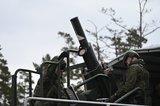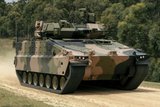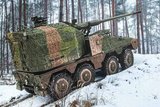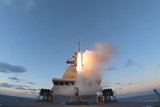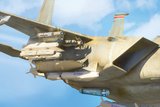Precision on Demand: The New Age of Loitering Weapons (Podcast)
Brought to you in partnership with Rafael
Listen on Apple Podcasts, Amazon Music, Spotify and more.
Military conflict today is increasingly defined by large numbers of uncrewed aerial vehicles (UAVs), as demonstrated by the war in Ukraine. However, true loitering munitions offer an extra complementary dimension, notably through greater precision, intelligence, and durability, as noted by Gideon Weiss, vice president of business development and marketing at Rafael.
“Drones are perceived as an easily weaponised device, but we want to see more precision,” he said. “We want to see more effectiveness on the battlefield, so that we can use fewer [systems], use them faster, and use them in combination with everything else that we have on the battlefield.”
The Spike family
Loitering munitions can take several forms, with Rafael’s capabilities built on its established family of Spike missiles.
However, these capabilities have applications across the missile family. The newest offering, L-Spike, offers a range of up to 40km and a loitering time of up to 30 minutes; it has real-time automatic target location, identification and tracking capabilities, and supports a multi-platform launcher capable of salvo attacks of up to four missiles.
Such systems can significantly improve visibility and combat effectiveness for infantry and other users, while reducing the threats to personnel. However, it is important to define the systems clearly, noted Weiss. The proliferation of drones in the modern battlespace means there is a common perception that a weaponised UAV is the same as a loitering munition.
This is far from the case, with many of these apparently “cheap” systems failing to meet expectations.
“Sometimes the success rate is in single digits,” Weiss warned. “Many of these drones just fall off – they’re not reliable and they cannot complete their missions.”
It is important to evaluate mission success not simply based on unit cost but in terms of cost per mission, said Weiss. If an operator deploys 10-20 low-cost drones and they all fail the mission, this will ultimately prove more expensive than utilising a single loitering munition that can reliably complete the required task, he said.
Challenging environment
All munitions face challenges in the modern battlespace, notably in terms of electronic warfare, jamming, and the need to operate in a GPS-denied environment.
The nature of the missions undertaken by loitering munitions means they must often cover large areas for relatively long periods of time, further deepening these challenges, noted Brigadier General L, a land warfare expert and business development manager with Rafael.
“It is much more complicated,” he said. “So how do we make it simple?”
The first answer is to avoid reliance on GPS. The EO capabilities in the Spike family mean it has an independent navigation capability and can easily acquire the target information, keeping the operator in the loop to assist with decision-making processes during the mission.
This visual capability means the user can quickly refine the aim point over the target or abort the mission when necessary, added Weiss.
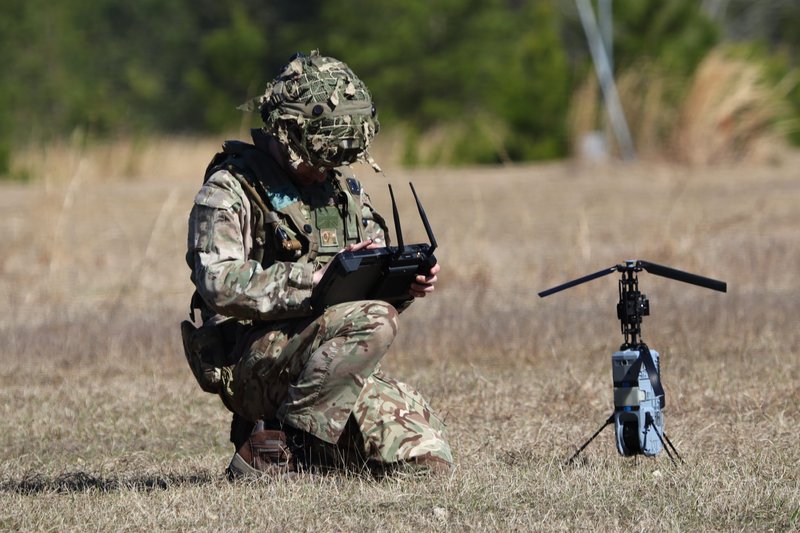
Importantly, a combination of different types of loitering munitions across the distributed force, in every platoon or every battalion, will boost operational flexibility. This is increasingly important during high uncertainty in the battlespace, as seen in the conflict between Ukraine and Russia.
“When you have a lot of uncertainty, it is very hard to control the battlefield from a single point of command … [with loitering munitions] they will be much more flexible in controlling their own area and being able to respond better to combat situations.”
In this confused, demanding battlespace, AI and autonomy also play a role in reducing the workload and the cognitive load on the operator. Such technology will not execute the mission from beginning to end but will play an important role in supporting situational awareness.
“Our approach at Rafael is not to use AI as robotic systems, but to use artificial intelligence and autonomy in certain areas only, [to reduce] the workload on the operator … the operator will have better situational awareness of what the weapon is doing and what the enemy is doing.”
Demanding future
Looking to the future, there is a clear need for loitering systems capable of conducting multiple strikes, said Brig Gen L – the aim is to build up numbers for operators until swarms of such munitions are effectively in use.
Additionally, the range will be continuously enhanced, with demands for target engagement at up to 150km. Rafael will expand its offerings to meet these demands, while continuing to overcome the evolving threats of electronic warfare and the challenge of GPS-denied environments.
“We understand this challenge is going to be greater and greater in the coming years,” Brig Gen L concluded.
Explore how Rafael’s loitering munitions are shaping the future battlefield — delivering precision, autonomy, and operational flexibility when it matters most. READ MORE
More from The Shephard Defence Podcast
-
![How satcom is shaping the future of fast, accurate warfare (podcast)]()
How satcom is shaping the future of fast, accurate warfare (podcast)
"Speed is the key advantage and accuracy is the key outcome": Amazon Kuiper Government Solutions’ Rick Freeman talks to Shephard’s Georgia Lewis about how space-as-a-service is transforming defence connectivity and access to satellite capabilities.
-
![Defending the Fleet: Naval air defence in the drone era (podcast)]()
Defending the Fleet: Naval air defence in the drone era (podcast)
In an era of swarming drones, proliferating missiles and saturation attacks, naval air defence must combine cutting-edge effectiveness with low cost per intercept. Israel’s Rafael is applying its long expertise to help navies adapt to emerging threats, while looking to a future of laser technology – and beyond.
-
![Combat-proven capabilities: How precision-strike systems are evolving for tomorrow’s battlespace (podcast)]()
Combat-proven capabilities: How precision-strike systems are evolving for tomorrow’s battlespace (podcast)
Combat-tested technology is being reshaped to counter A2/AD threats, reduce reliance on GPS and enable faster, more autonomous targeting in complex environments. In this special podcast, experts explain how the evolving threat landscape is shaping next-generation strike capabilities.
-
![Energy evolution: How laser defence systems are powering the next phase of air defence (podcast)]()
Energy evolution: How laser defence systems are powering the next phase of air defence (podcast)
Laser-based air defence is moving from promise to deployment as global threats evolve. In this special podcast, we explore how high-energy laser systems are reshaping interception strategies.
-
![Why tactical UAVs are winning on the future battlefield (Podcast)]()
Why tactical UAVs are winning on the future battlefield (Podcast)
In Conversation: In this special edition of the Shephard Defence Podcast, Tony Skinner sits down with Dan Slasky, President and CEO of Aeronautics, to explore how cutting-edge tactical unmanned aerial systems are reshaping today’s battlefields.
-
![Podcast: The evolving landscape of military simulation and training technologies]()
Podcast: The evolving landscape of military simulation and training technologies
This week on the Shephard Defence Podcast, we explore the evolution of military simulation and training technologies, including advancements in cloud computing, networked training, and the increasing use of simulation in response to changing military demands.







